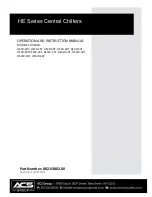
C190-0302 - Rev 1.0 EN
31/59
5.13
Blockages
Do not reach into any section of the chipper whilst it is running. Never reach into the
rotor housing with unprotected hands. There are sharp blades and any movement of the
rotor may cause serious injury.
If chips stop coming out of the discharge tube, IMMEDIATELY STOP FEEDING
MATERIAL IN AND TURN OFF THE ENGINE. Feeding more material into a blocked
machine will compact the blockage, making it much harder to clear and possibly damaging
the machine.
1.
Ensure the chipper is in a safe condition. (Refer to Section 6.1 "
2.
Remove the discharge tube and check that it is not obstructed.
3.
Remove the blade access hatch.
4.
Wearing gloves, reach into the rotor housing and remove as much of the debris
causing the blockage as possible.
5.
Carefully rotate the rotor to ensure all debris has been removed.
6.
Refit the blade access hatch.
7.
Refit the discharge tube.
8.
Restart the engine and increase to full speed.
9.
Allow the machine time to clear any remaining debris from the rotor housing.
10. Feed in a small piece of brushwood and confirm it is ejected correctly.
11. If the machine appears to still be blocked, repeat the process.
5.14
Blade Wear
The TW 230HB has two blades, 135 mm (5 inches) long, hollow ground to a radius of
75mm, and 100 mm wide when new. A new blade will chip for up to 25 hours before
requiring sharpening. This will significantly reduce if the machine is fed with stony, sandy or
muddy material.
A blunt blade has reduced performance, putting greater stress and load on the machine
and producing irregular or stringy chips.
Ensure the blade edge is sharp and free from chips. If the
blade is blunt, or damaged, rotate or change it. When both
sides of the blade are blunt it should be sent to a reputable
blade sharpening company.
A blade can be sharpened several times, providing it does
not exceed the wear mark which indicates the safe limit
(Figure 16).
The static anvil should also be checked and replaced if
worn, as cutting performance will be reduced, even if sharp
blades are fitted.
Figure 16 - Blade wear marks
5 Operating Instructions
TW 230HB (Diesel)
Summary of Contents for TW 230HB (Diesel)
Page 1: ...C190 0302 Rev 1 0 EN TW 230HB Diesel Wood Chipper INSTRUCTION MANUAL Original Instructions...
Page 6: ...4 59 C190 0302 Rev 1 0 EN TW 230HB Diesel THIS PAGE INTENTIONALLY LEFT BLANK...
Page 18: ...16 59 C190 0302 Rev 1 0 EN TW 230HB Diesel THIS PAGE INTENTIONALLY LEFT BLANK...
Page 26: ...24 59 C190 0302 Rev 1 0 EN TW 230HB Diesel THIS PAGE INTENTIONALLY LEFT BLANK...
Page 36: ...34 59 C190 0302 Rev 1 0 EN TW 230HB Diesel THIS PAGE INTENTIONALLY LEFT BLANK...
Page 50: ...48 59 C190 0302 Rev 1 0 EN TW 230HB Diesel THIS PAGE INTENTIONALLY LEFT BLANK...
Page 51: ...C190 0302 Rev 1 0 EN 49 59 7 Electrical System 7 Electrical System TW 230HB Diesel...
Page 52: ...50 59 C190 0302 Rev 1 0 EN TW 230HB Diesel THIS PAGE INTENTIONALLY LEFT BLANK...
Page 53: ...C190 0302 Rev 1 0 EN 51 59 8 Hydraulic System 8 Hydraulic System TW 230HB Diesel...
Page 54: ...52 59 C190 0302 Rev 1 0 EN TW 230HB Diesel THIS PAGE INTENTIONALLY LEFT BLANK...
Page 58: ...56 59 C190 0302 Rev 1 0 EN TW 230HB Diesel THIS PAGE INTENTIONALLY LEFT BLANK...
Page 60: ...58 59 C190 0302 Rev 1 0 EN TW 230HB Diesel THIS PAGE INTENTIONALLY LEFT BLANK...
Page 61: ...C190 0302 Rev 1 0 EN 59 59 12 Notes 12 Notes TW 230HB Diesel...
Page 62: ...C190 0302 Rev 1 0 EN...
















































